First thing first: this is a link to our Gustavo Santaolalla Real Argentina Spotify playlist. Got it playing? OK, read on…
You will have heard Gustavo Santaolalla’s music. He may not be a household name everywhere, but his prodigious talent – some have argued genius – has been one of Argentina’s greatest musical exports.
Where to begin? Well, there was an Oscar for Ang Lee’s gay cowboy epic Brokeback Mountain soundtrack. Oh, and there was another one the following year for Babel, Alejandro González Iñárritu’s depress-a-thon. He also scored music that appeared in Amores Perros, 21 Grams, The Motorcycle Diaries, Fast Food Nation, Into the Wild and the forthcoming adaptation of Jack Kerouac’s On the Road directed by Walter Salles.
His work as a producer reads like the history of rock en español: Divididos and Bersuit Verbarabat from Argentina, as well as Fobia, Molotov and Juanes. He also produced a couple of Morrissey B-sides, you know, on a day off. OK, they are no Suedehead, but it is Morrissey.
Apart from the film scores, he is perhaps most well known for being the driving force behind the neo-tango collective, the Bajafondo Tango Club that mixes acoustic tango with electronica, much like the Gotan Project.
Auspicious Beginnings
Where does such a musical polymath arise from? He was born in a Buenos Aires suburb called El Palomar, a planned ‘community’, a garden city. Both derided and commended as being a bit ‘hippie’, the city is a creative hotspot that has produced rock groups such as Los Piojos, Divididos and Sumo, and Santaolalla’s first band, Arcoiris (rainbow). The band was folky, rock-y, psychedelic, jazzy, electronica-y (no, I know it’s not a word) and, well, like nothing before – and its influence can be seen across much rock en español.
He then went on to record three solo albums, the most famous being Ronroco (see our Spotify playlist) with the song De Ushuaia A La Quiaca (two towns on opposing ends of Argentina’s geography) used in the brilliant Motorcycle Diaries. Its use of the Andean small guitar – the charango – is now one of his defining sounds. Pampa on the album has been used in the Sopranos.
To Hollywood
Santaolalla has long been a resident of California, and as his past music began to be used in movies and TV programmes, it was only a matter of time before he was commissioned for the full soundtrack, starting with 21 Grams. Despite being a Mexican film, the soundtrack is unmistakably Argentinian. Santaolalla uses the bandoneon – an instrument that transcends tango and folk in Argentina. Its melancholy fits perfectly into this downright miserable film.
It was in 2005 when he won the Oscar for Brokeback Mountain that demonstrates a lighter touch. He fills the vast on-screen panoramas effortlessly and the theme song, The Wings, became a hit of sorts, even inspiring a couple of terrible remixes (also on the Spotify playlist). For Babel he returns to folk music to accompany the desert landscapes portrayed in the film, using haunting off-kilter rhythms to disorientate the watcher and inspire a sense of drama. On the Road, directed by Walter Salles, with whom he worked on The Motorcycle Diaries, will be out later in 2012.
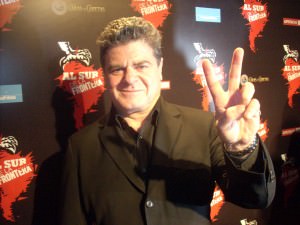
Gustavo Santaolalla
Photo: Víctor Santa María
The Return to Tango
All Argentines living abroad pine for Buenos Aires – and its soundtrack. And although a regular visitor to his homeland, Santaolalla’s movement behind Bajofondo was one that allowed him to take the music and put a typically innovative spin on it. The album, Bajofondo Tango Club, was released in 2002 (a couple of years before the Gotan Project’s La Revancha del Tango). At its best, Bajofondo’s neo-tango – or tango electronica (two terms that make me shudder a little) – is heir apparent to Piazzolla’s nuevo tango that added inspirations of jazz and classical music. Its only follow up was Mar Dulce which opened with the dancy Grand Guignol and its music consequently appeared on every ‘Chillax, the very best of Ibiza’s sunrise, vol. 83’ sort of compilation. It’s one of the few things he has touched that didn’t win a Grammy (and rightly so in this blogger’s opinion). Thankfully his album and documentary Café de los Maestros, made with Walter Salles, was pure tango with none of the featured artists under 70.
A Future of Musical Innovation
His latest work is typically curveball: a video game. Like Spielberg’s recognition of the medium (and fact that gaming is now a bigger industry than Hollywood), Santaolalla understands the video game as ‘interactive cinema’. The Last of Us, out this year, is an astonishing-looking story of father and daughter existing in a post apocalyptic world teeming with aliens. Santaolalla’s music adds atmosphere to the ‘New York looking grown over’ shots and his tribal beats add to the drama of attack.
Where to now? Well, it would be pointless guessing, but personally I’m hoping for a return to rock nacional.

Daniel Neilson

Latest posts by Daniel Neilson (see all)
- RUN BA RUN - July 12, 2016
- A Beginners Guide to Football Teams in Buenos Aires - September 10, 2014
- Argentina Hit Their Stride in World Cup 2014 - June 26, 2014

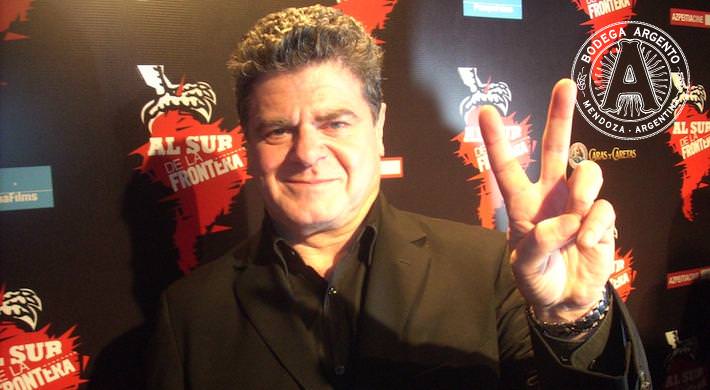
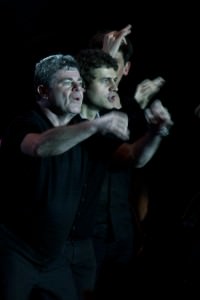
 Folklorico – Traditional Argentine Music
Folklorico – Traditional Argentine Music  Independent Tango Music in Buenos Aires
Independent Tango Music in Buenos Aires  Gaby Kerpel Beats to a Different Drum
Gaby Kerpel Beats to a Different Drum 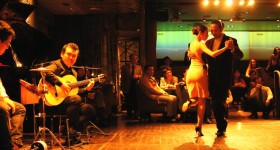 Argentinian Culture Around the World
Argentinian Culture Around the World 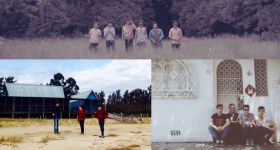 Argentinian underground bands you should be listening to
Argentinian underground bands you should be listening to  Hot Fest Buenos Aires: An Argentine Music Festival
Hot Fest Buenos Aires: An Argentine Music Festival 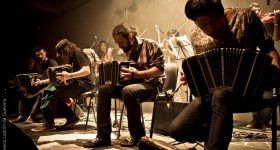 TANGO TRACKS ACROSS THE DANCEFLOOR
TANGO TRACKS ACROSS THE DANCEFLOOR  FOLCLORE: FROM GAUCHOS TO ELECTRO BEATS
FOLCLORE: FROM GAUCHOS TO ELECTRO BEATS  Argentina For Export: Contemporary Cultural Heroes
Argentina For Export: Contemporary Cultural Heroes  Argentinian Christmas Recipes and Food Traditions
Argentinian Christmas Recipes and Food Traditions 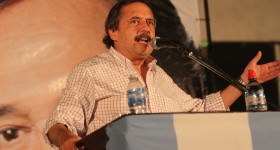 Carry on Cristina? The 2011 Argentinian Elections
Carry on Cristina? The 2011 Argentinian Elections